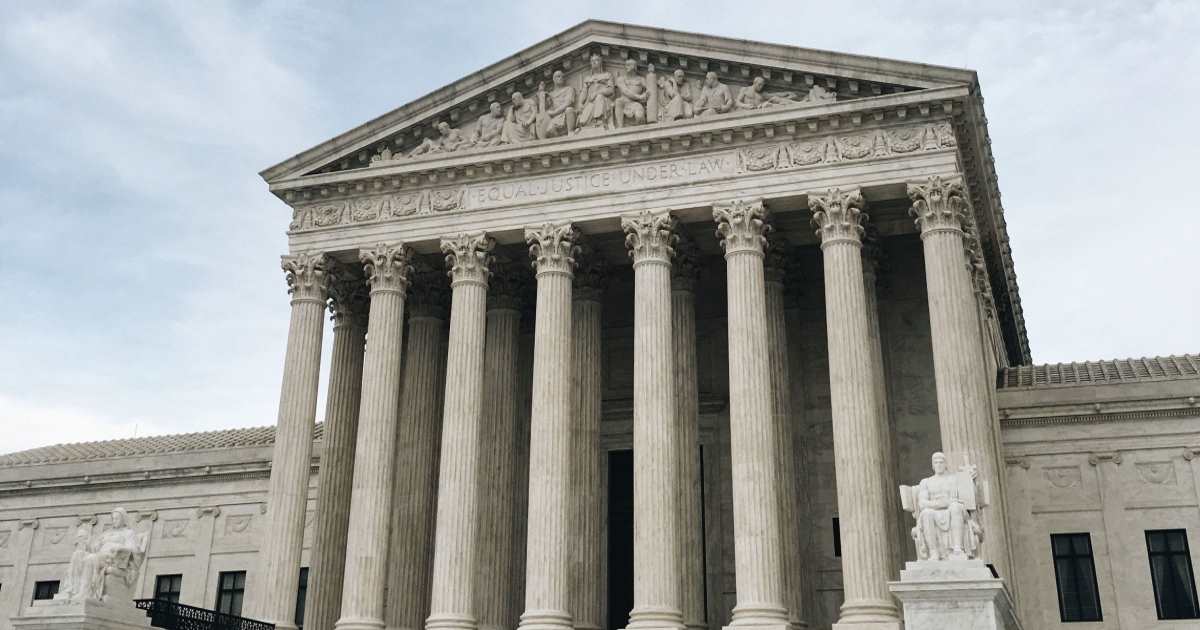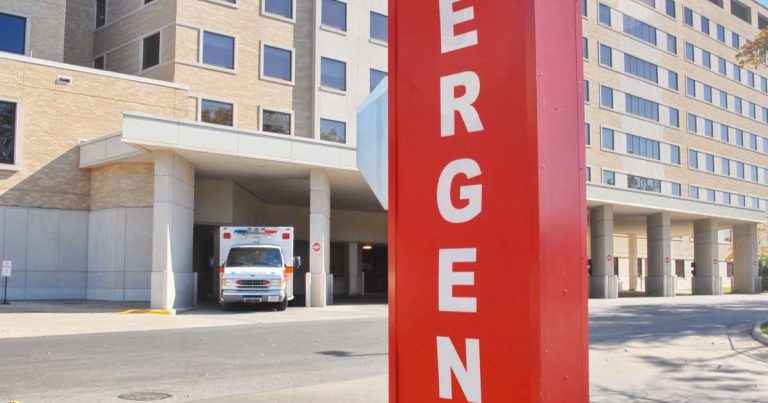The Supreme Court and the Health Insurance Mandate
Mary Brown was a small business owner who didn’t want government telling her to buy health insurance. She is the woman who filed the original lawsuit asserting her right to abstain. But, interestingly, Mary Brown is no longer the plaintiff before the Supreme Court. What happened?
The National Federation of Independent Businesses (NFIB) dropped her from the lawsuit when she got sick. Medical bills began to pile up. Mary Brown, like so many others in America without health insurance, soon went bankrupt. Her auto repair business closed. Her hospital and doctors went unpaid.
Mary Brown is a sick woman in bankruptcy. The hospitals, to keep from going bankrupt themselves, have convinced the government to let them charge the health insurance companies more for the rest of us in order to make up part of the loss. This year your insurance premium and mine will be $1,000 higher to help pay for an irresponsible Mary Brown. This true story about Mary Brown, the woman who sued the government, makes the case for the individual mandate.
The Supreme Court deliberated for three days over the constitutionality of the Affordable Care Act. On day one the question was whether the Court had jurisdiction to hear the case. Should the justices have wanted to punt, they had a rationale to avoid a decision now on the more critical questions. Opinion is almost unanimous that the court did, indeed, want to meet this issue head-on, and so the next day’s arguments became intensely relevant.
On day two the justices took up the question of whether the “individual mandate” is constitutional in requiring uninsured persons who can afford insurance to take out a minimum level policy, as is required in the Affordable Care Act. The third day the justices considered two issues: whether the remainder of the new health care reform is constitutional without the mandate, or whether the mandate is so central that eliminating that one feature would invalidate the entire law. The other issue was whether the federal government has the authority to expand the number of people served by Medicaid, and whether it can define additional health-care benefits for Medicaid recipients when states object.
On the second day of the Supreme Court argument the question boiled down to individual liberty vs. government authority to regulate commerce. The question became, “If the government can force you to buy health insurance, what can’t the government force you to do?”
The conservative five in black robes asked a range of hypothetical questions such as, “Why could not government require you to join a health club? Or as Justice Scalia asked fondly, “Why not require everyone to eat broccoli, as clearly this vegetable is good for us.” Conversely, liberal judges (also in black) pointed to examples where government does place mandates on citizens, such as requiring auto insurance or pollution controls on automobiles.
Mr. Donald Verrilli, Solicitor General, gave Justice Kennedy, the probable swing vote, a rationale for “a limiting principle,” that which makes health insurance an exception that provides government the right to mandate requirements. He explained that the market for health insurance cannot be separated from the market for health care. We have a law stating that any person with a medical crisis must be provided full use of hospital facilities and medical staff whether or not that person can pay. If there is to be a law that requires hospitals to give emergency care to the uninsured there should be another law that requires those persons who can afford it to pay for their care. There can be no free rides for people who can afford to pay. Health care is different from every other type of government mandate because it is basic to preservation of life.
The individual mandate provides a compelling solution to a national problem. The solution is reasonable, not arbitrary. Nothing is gained by conjuring up absurdly extreme cases where there is no compelling national interest.
Opponents of the mandate argued there are at least two other solutions: (1) Repeal the Ronald Reagan mandate that hospitals be required to accept all persons needing emergency care. We would then let the uninsured die in the hospital waiting rooms. We could say these people had their chance for health insurance and life. They chose to ignore it so they properly faced death as the consequence. (2) Permit the uninsured to wait and buy insurance on the way to the hospital. This would drive up premiums for everyone, as others would join the uninsured to get a free ride until the moment of crisis. Obviously, no insurance system can function with that rule. However, Michael Calvin the lawyer representing NFIB took that line of reasoning before the court. The individual mandate remains the only compelling solution to a national problem.
The Supreme Court could decide to strike down the mandate but let the remainder of the Affordable Care Act stand, the remainder being within the jurisdiction of the Congress. How could we deal with that unfortunate situation? Congress could decide to place a tax on everyone to pay for health care. It is more likely at this time that Congress would prefer a different solution.
Nobody denies that states have the right to adopt an individual mandate on health insurance. The issue is the constitutional right of the federal government to do so. Mitt Romney claims he was correct to require a mandate at the state level. One solution is for states who wish to honor the mandate to do so and proceed with the federal law intact. Other states would vote to reject the mandate. Nonetheless, other parts of the Affordable Care Act would remain in place. Perhaps half of the states would vote one way, and the other half the opposite way.
What is the consequence of voting to reject a mandate? Uninsured persons who could afford insurance would continue to be residents in that state. Those who cannot afford policies but want insurance would continue to receive subsidies and have insurance. We are dealing with some 16 million who can afford insurance and reject it. Perhaps half of these would be in states that remain outside the system. In those states insurance companies would raise rates substantially because they have fewer persons in their insurance pool. In addition, all citizens in the state who buy health insurance will pay an extra thousand dollars to help pay for those who get a free ride. Insurance companies will insist on repealing sections of the law that prevent them from cancelling policies on those with “pre-existing conditions.” The actuarial tables must cover insurance company costs plus 20% for overhead and profits.
In summary, states that opt out would have tens of thousands of uninsured citizens living off those who buy insurance. Bankruptcies would continue, as sudden illness or accident is the leading cause. People in these states would have to live with the nightmare of medical expense higher than they can pay when a persistent illness arises and the insurance company cancels one’s policy or raises rates so high it is not affordable. One would expect that over a few years even hard line free market folks might see the wisdom of the mandate enjoyed in neighboring states.
The law does allow younger workers to avoid high cost full coverage required of their elders. Those under age 30 can satisfy the individual mandate by buying low-cost catastrophic coverage. (Section 1302 (e))
Republicans are using every possible road block to destroy this landmark health care reform. Going to the Supreme Court is only one of their many venues. Another is to defeat President Obama in the coming election and also elect a Republican Congress and Senate. They would then take us back to the intolerable days when ever fewer people are able to afford health insurance, when businesses, families and our government are strapped with out of control escalating costs. Let’s face it. Republicans do not have a credible plan to insure everyone, improve quality of the nation’s health, or control costs. Those are the explicit goals of the Affordable Care Act.





